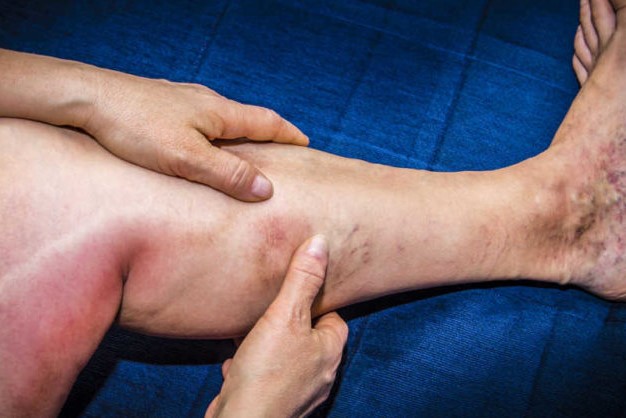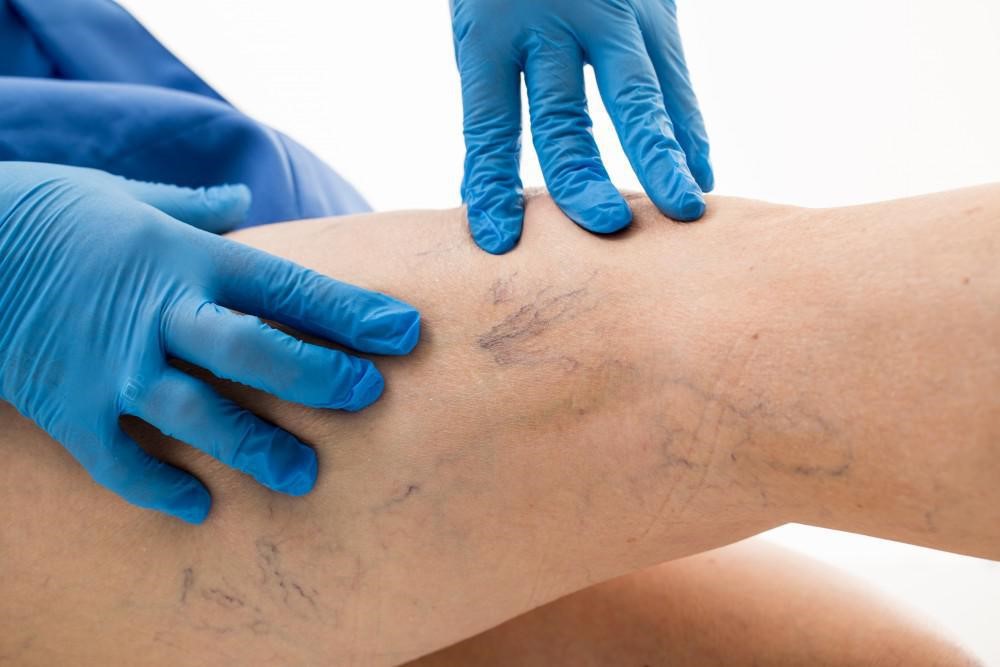
Pulmonary thromboembolism and deep vein thrombosis: symptoms and signs
Thromboembolic pulmonary disease’ or ‘pulmonary thromboembolism’ (hence the acronym TEP) in medicine refers to vascular obstruction of the pulmonary blood vessels caused by blood clots (thrombi) that, after detaching from the vessel wall of origin, have travelled through the venous system to the blood vessels of the lungs (embolisation). In this article, we will focus on the symptoms and signs of pulmonary thromboembolism
Symptoms of pulmonary thromboembolism
The symptoms of pulmonary thromboembolism are not specific and may even occur asymptomatically, so it is important to have a high index of suspicion for this type of diagnosis, especially in the presence of risk factors.
At anamnesis, common symptoms in pulmonary thromboembolism and percentage frequency are:
- Acute dyspnoea 73%
- Pleuritic pain 66%
- Cough 37%
- Peripheral oedema 28%
- Leg pain 26%
- Haemoptysis 13%
- Palpitations 10%
- Whistling 9%
- Ring-like pain 4%.
Clinical suspicion is based on the finding of symptoms such as sudden onset dyspnoea, chest pain, syncope, cough with haemoptysis and fever above 38 °C.
As is easily seen, the most common symptom associated with pulmonary embolism is acute transient dyspnoea.
The appearance of pleuritic chest pain and haemoptysis, on the other hand, indicates the development of a pulmonary infarction with pleural involvement.
Syncope, although infrequent as a symptom, depicts, on the other hand, the presence of large clots in the pulmonary circulation with consequent severe haemodynamic compromise.
Finally, a potentially present symptom is the feeling of imminent death, which is usually associated with the presence of large emboli and hypotension.
Signs of pulmonary thromboembolism
The physical examination of a patient with thromboembolism is most frequently characterised by the presence of tachypnoea, tachycardia and fever.
On objective examination, common signs in pulmonary thromboembolism, and percentage of frequency, are:
- Tachypnoea (>20 acts/minute) 70%
- Rales 51%
- Tachycardia (>100 bpm) 30%
- Increased P2 23%
- Diaphoresis 11%
- Fever 7%
- Pleural rubs 3%
- Cyanosis 1%.
The most frequent signs include cyanosis, jugular turgor, tachycardia, polypnoea and hypotension, which if severe can lead to cardiogenic shock.
Symptoms and signs of deep vein thrombosis
Although thromboemboli can form almost anywhere in the cardiovascular system, the majority of them originate in the deep veins of the lower limbs, hence in patients with deep vein thrombosis or DVT: all the symptoms and signs of DVT are therefore an important alarm bell that should prompt the physician to assess the possible presence of pulmonary embolism.
Signs and symptoms of deep vein thrombosis in the lower limb (leg and thigh) are:
- oedema (swelling, fovea sign);
- coughing and sneezing resulting in increased venous pressure give pain in the calf and ankle (Louvel’s sign);
- when lying down, the turgidity of the veins on the inner side of the leg is appreciated: the Great saphenous vein dilated due to haemodynamic compensation (Pratt’s sign).
- fever but not always;
- cyanotic (bluish) skin in the affected area;
- warm skin in the affected area;
- hardened and sore muscles (Bauer’s sign);
- painful percussion of the tibia with the finger (Liscker’s sign);
- increased heart rate but not always
- feeling of heaviness in the affected limb;
- pain in the thigh;
- swollen limb.
Read Also:
Emergency Live Even More…Live: Download The New Free App Of Your Newspaper For IOS And Android
Emergency, The ZOLL Tour Kicks Off. First Stop, Intervol: Volunteer Gabriele Tells Us About It
Cerebral Stroke Is A Time-Dependent Disease, Celebrating World Stroke Day On 29 October
Emergency Data Management: ZOLL® Online Europe, A New European Cloud-Based Platform To Be Discovered
Paediatrics, New Ablation Technique For Tachycardia At The Bambino Gesù In Rome
Eisenmenger Syndrome: Prevalence, Causes, Symptoms, Signs, Diagnosis, Treatment, Sporting Activities



